Winters in Delhi are an annual event eagerly awaited and, at times, not so eagerly awaited by its residents. The chilly winds, misty mornings, and the cozy feeling of bundling up in layers are all part and parcel of this season. But the pressing question on everyone’s mind is, “When will winter end in Delhi 2024?”
Understanding the Winters in Delhi
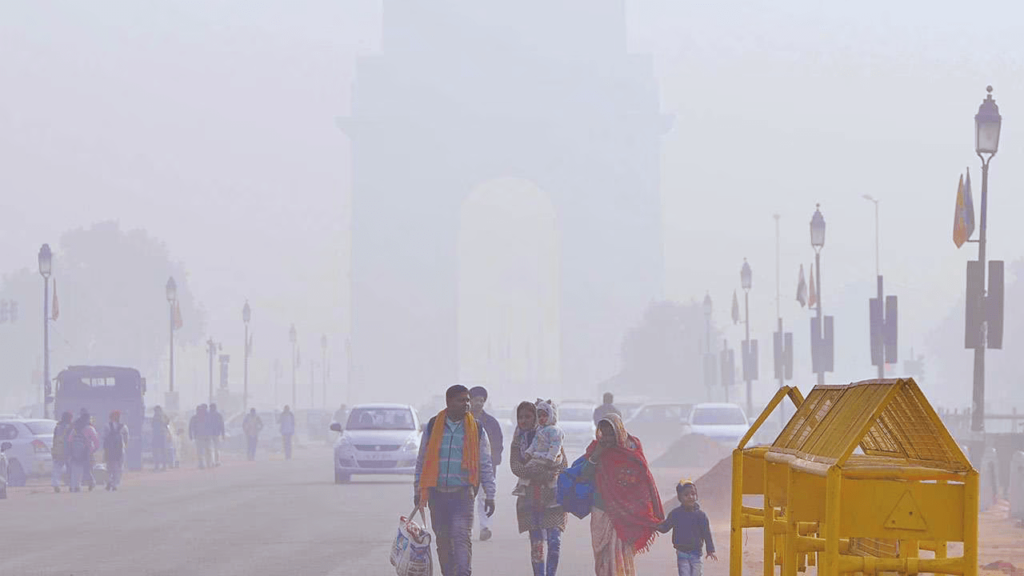
The Arrival of Winter in Delhi
Winter arrives in Delhi with a blend of cultural festivities and changing weather patterns. Delhi experiences a distinct winter season characterized by chilly temperatures and foggy mornings. The onset of winter usually occurs in late November and extends until February. During this period, temperatures can drop significantly, often reaching near-freezing levels.
The arrival of winter in Delhi has various impacts on daily life. Residents bring out their winter clothing, and the city becomes adorned with festive lights and decorations. Traditional winter activities, such as enjoying hot beverages at street vendors or attending outdoor events, mark the beginning of the season.
However, the exact date of winter’s arrival can vary from year to year due to climate fluctuations. Monitoring meteorological updates and historical weather data can offer insights into the anticipated onset of winter in Delhi.
Winter Weather Trends in Delhi
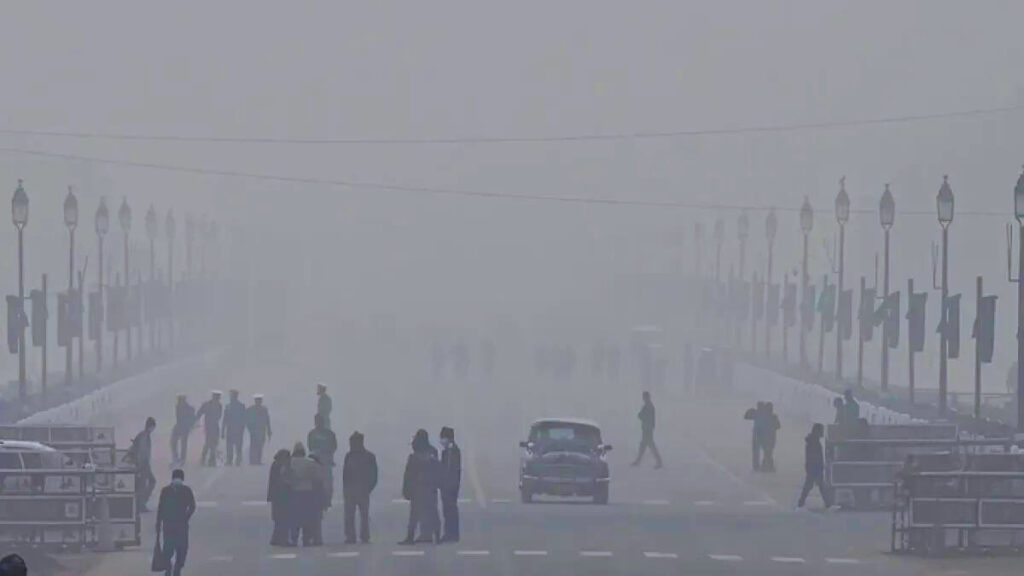
Delhi is experiencing a notable winter season marked by a series of cold spells and temperature dips. The city recorded its lowest temperature of the 2024 winter season, reaching 3.9°C, as reported by Hindustan Times. This cold wave is part of a larger pattern, with Delhi recently experiencing its coldest day of the season, where the maximum temperature dropped to 13.4°C, six degrees below normal.
Despite these cold conditions, the maximum temperature in Delhi has been observed to hover around 17°C during certain days. The cold spell is expected to persist, with a forecast of cold day conditions and a maximum temperature settling four notches below normal at 15.2 degrees Celsius.
This winter season has been characterized by a blend of extreme cold days, dense fog, and occasional variations in temperature, highlighting the dynamic nature of Delhi’s winter weather.
Historical Winter Patterns
Delhi’s winter typically begins in November and peaks in January, characterized by cool temperatures. According to Wikipedia, the average temperatures during this period are around 14°C (57°F). The coldest month is January, with an average low of 47°F and a high of 68°F, as reported by WeatherSpark.
Historical weather data from Climate Data indicates that the mean yearly temperature in New Delhi is approximately 24.6°C (76.3°F). Additionally, ClimatestoTravel notes that on the coldest nights in January 1991, temperatures dropped to 1.1°C (34°F).
Overall, Delhi’s winter follows a consistent pattern with cool temperatures, particularly in January, and occasional historical deviations.
Temperature Fluctuations
Delhi is currently experiencing notable temperature fluctuations during the winter of 2024. Recent reports from Hindustan Times and India Today highlight a cold and grey start to 2024, with daytime temperatures staying under 15 degrees Celsius, significantly below normal.
The fluctuating temperatures are evident in the recorded peak daytime temperatures in Delhi. On January 2, 2024, the maximum temperature rose to 17°C, up from 15.9°C the day earlier, as reported by Hindustan Times.
Furthermore, the Times of India discusses the criteria for a “cold day” in Delhi, emphasizing that Safdarjung, a location near Lodhi Road, did not meet the criteria on January 3, 2024, despite the maximum temperature being two degrees below normal.
These fluctuations may be part of the broader winter weather patterns, contributing to a mix of cold and relatively milder days in Delhi.
Unpredictability in Winter Months
The unpredictability of winter weather is influenced by various climate phenomena and their interactions. One key factor is the El Niño-Southern Oscillation (ENSO), as explained by Climate.gov. ENSO events, such as El Niño or La Niña, can lead to deviations from typical winter conditions, impacting precipitation and temperatures.
Additionally, climate variability, as described by the National Weather Service, contributes to unpredictable winter weather. This variability refers to the natural fluctuations in aspects like temperature and precipitation, making each year distinct from the previous one.
Rising temperatures, as highlighted in a study from Stanford University, can intensify weather unpredictability in Earth’s midlatitudes. The warming climate may lead to more extreme and less foreseeable winter conditions.
Moreover, phenomena like La Niña, detailed by the National Weather Service, can impact winter weather locally. During a La Niña event, changes in Pacific Ocean temperatures influence tropical rainfall patterns, contributing to specific winter outcomes.
In essence, the unpredictability of winter months stems from the dynamic interplay of various climate systems and their responses to natural and anthropogenic influences.
Factors Influencing Winter Duration
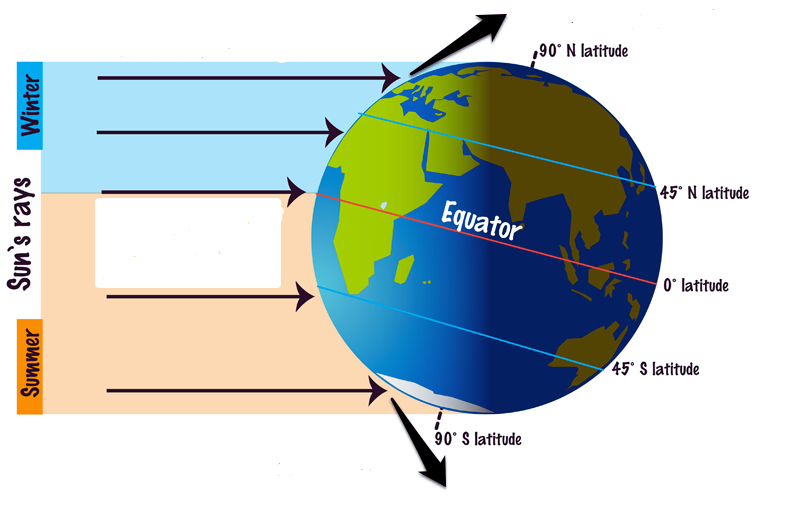
Geographical Factors
Delhi’s climate is significantly influenced by its geographical location. As a landlocked city in northern India, Delhi experiences extreme weather conditions due to various geographical factors:
- Latitude and Inland Location: Delhi’s proximity to the Tropic of Cancer and its location in the interior of the Indian subcontinent contribute to its extreme temperatures, with hot summers and cold winters.
- Topography: The city’s topography affects temperature inversions and fog formation during winters. The flat terrain can lead to the trapping of pollutants, exacerbating air quality issues.
- Air Circulation: Delhi’s weather is influenced by the prevailing wind patterns, including the monsoon winds. The city experiences a continental climate, resulting in distinct seasons.
- Pollution Trapping: During winters, cool air gets trapped near the ground, leading to temperature inversions. This phenomenon, combined with high levels of pollution, contributes to the infamous winter smog in Delhi.
Understanding these geographical factors provides insights into Delhi’s climate patterns and the challenges it faces, particularly in terms of air quality.
Atmospheric Conditions in Delhi
Delhi is currently experiencing severe atmospheric conditions characterized by dense fog and low temperatures. Key points include:
- Low Temperatures: Delhi recorded its lowest temperature of the 2024 winter season, dipping to 3.9°C. The city has recently seen a cold spell, with the maximum temperature dropping to 13.4°C, marking the coldest day in the season.
- Dense Fog: The atmospheric conditions have led to the formation of dense fog, significantly reducing visibility across the region. The fog has persisted for several days, impacting daily life and transportation.
- Weather Impact: The combination of low temperatures and dense fog is affecting various aspects of life in Delhi, including travel disruptions and discomfort due to the cold weather.
- Recent Events: The weather conditions are a result of a cold wave, with temperatures staying below normal. Additionally, there have been reports of light rains and the possibility of isolated rain spells.
Residents are advised to take necessary precautions to cope with the cold weather and poor visibility caused by the dense fog.
Impact of Global Climate Changes
Global climate changes have far-reaching impacts across various sectors, with consequences for the environment, human health, and socio-economic systems. Key effects include:
- Extreme Weather Events: Climate change intensifies extreme weather events such as hurricanes, droughts, floods, and wildfires.
- Rising Temperatures: Increasing global temperatures contribute to heatwaves, affecting ecosystems, agriculture, and human health.
- Sea Level Rise: Melting glaciers and ice caps lead to rising sea levels, threatening coastal areas and island nations.
- Impact on Biodiversity: Climate change disrupts ecosystems, leading to loss of biodiversity, changes in migration patterns, and extinction risks for various species.
- Health Risks: Altered climate conditions contribute to the spread of diseases, heat-related illnesses, and worsened air quality, impacting human health.
- Economic Consequences: Climate-related events result in economic losses, particularly in vulnerable regions, affecting agriculture, infrastructure, and livelihoods.
- Social Displacement: Rising sea levels and extreme weather events contribute to the displacement of communities, exacerbating social and geopolitical challenges.
Signs of Winter Ending
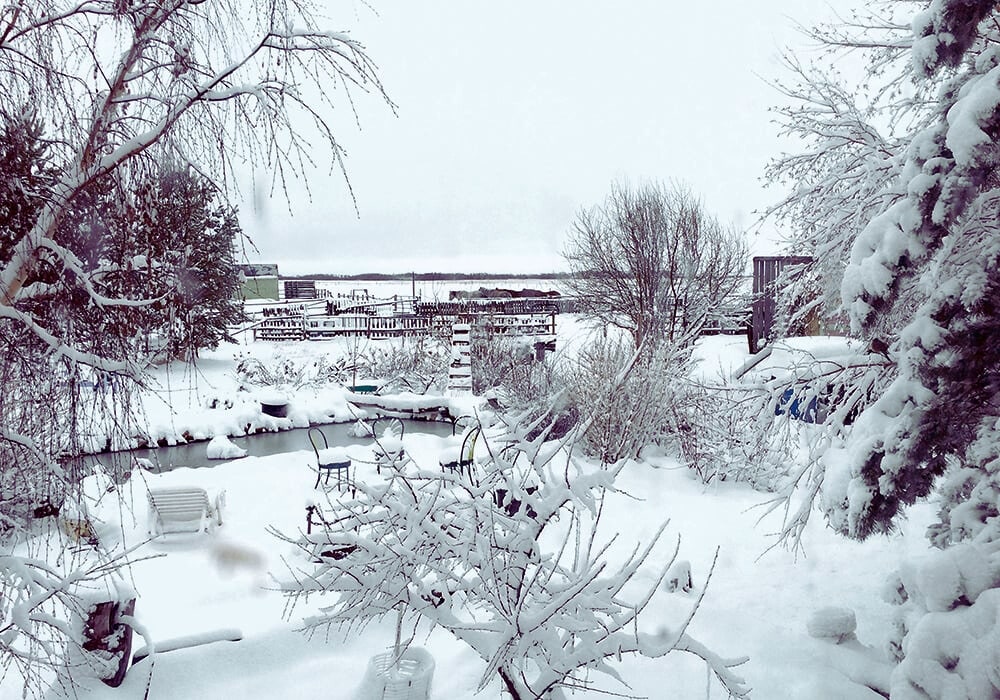
Nature’s Indications
Recent weather patterns and atmospheric conditions suggest noteworthy indications:
- Delhi Weather: Delhi is experiencing cold temperatures with a minimum recorded at 8.3°C, and foggy conditions persisting, impacting visibility.
- El Niño Alert: There is a more than 95% chance of El Niño conditions continuing through the Northern Hemisphere winter, potentially leading to global consequences, including record warmth.
- Climate Impact: Strong El Niño events, like the anticipated one in 2023–2024, are predicted to have substantial consequences globally, influencing temperatures and weather patterns.
- Air Pollution in Delhi: The post-monsoon season creates ideal conditions for air pollution in Delhi, contributing to poor air quality.
Lengthening Daylight Hours
The phenomenon of lengthening daylight hours is a natural occurrence driven by the Earth’s axial tilt and its orbit around the Sun. As the Northern Hemisphere progresses towards the March equinox, daylight hours gradually increase. During this time, the Sun’s path in the sky appears to shift northward, resulting in longer days and shorter nights.
- Seasonal Changes: The increase in daylight is particularly noticeable after the December solstice, which marks the shortest day of the year in the Northern Hemisphere. As the Earth continues its orbit, daylight extends, and the Sun rises higher in the sky.
- Equinox Influence: The approaching March equinox signifies the point at which day and night are approximately equal in duration. Beyond this date, daylight continues to lengthen until the June solstice, marking the longest day of the year.
Changes in Flora and Fauna
Environmental reports and court orders from January 2024 highlight significant actions and concerns regarding flora and fauna.
- The Union Ministry of Environment, Forest and Climate Change (MoEF&CC) filed an action report on January 2, 2024, indicating steps taken to address environmental issues.
- Delhi is actively addressing environmental challenges across various areas, including energy, heat resilience, and biodiversity enhancement.
- India faces environmental challenges such as air and water pollution, food and water shortages, and waste management.
- Delhi’s draft Master Plan prioritizes environmental sustainability, focusing on green spaces and built environments.
- Initiatives like the Delhi City of Lakes project aim to rejuvenate water bodies, improve water quality, and reduce flooding, contributing to biodiversity efforts.
- Dense fog in North India during late December 2023 and early January 2024 might impact flora and fauna, affecting visibility and local ecosystems.
Expert Predictions
Meteorological Insights
Delhi has recently experienced its coldest day of the winter season, with the maximum temperature dropping to 13.4°C, the lowest in two years. The India Meteorological Department (IMD) issued a yellow alert for North India due to the cold wave conditions. The forecast indicates partly cloudy weather until January 16, with temperatures expected to remain low. The minimum temperature in Delhi reached 7.1 degrees Celsius, contributing to the cold spell. Fog has been prevalent during this period, impacting visibility and creating challenging conditions. Meteorologically, such days are classified as “cold days” based on specific criteria outlined by the IMD.
Analysis of Previous Years
Climate change has been evidenced through observed changes in temperature, precipitation, storms, floods, and droughts, indicating long-term alterations in weather patterns. The impacts of climate change are visible in more intense extreme weather events, including heatwaves, droughts, and heavy rainfall. Scientists study evidence such as ice cores and coral reefs to understand historical climate changes. Notably, northern forest winters have experienced a loss of cold and snowy conditions.
Additionally, monitoring reports provide analyses of global temperatures and precipitation, placing the data into historical perspectives[5]. Studies, such as one on winter weather whiplash events, highlight the context-dependent effects of meteorological changes.
Limitations in Predicting Winter End
Weather predictions, especially those related to the end of winter, face inherent limitations. Despite advancements, forecasting the specific conditions toward the end of winter remains challenging. Various factors contribute to this difficulty:
- Complexity of Snowfall Predictions: Forecasting snowfall is particularly challenging due to the influence of different temperature levels in the atmosphere, making accurate predictions elusive.
- Short-Term Predictability: Reliable short-term predictions extend to around nine to ten days for daily weather in the mid-latitudes, where most of the population resides, emphasizing the difficulty in making precise forecasts beyond this timeframe.
- Unforeseen Shifts: Unpredicted shifts in rain versus snow lines can lead to inaccuracies in snow forecasts.
- Long-Term Extremes: While reliable predictions of weather extremes are crucial for risk mitigation, achieving accuracy on both short and long timescales remains challenging.
Cultural Impact of Winter
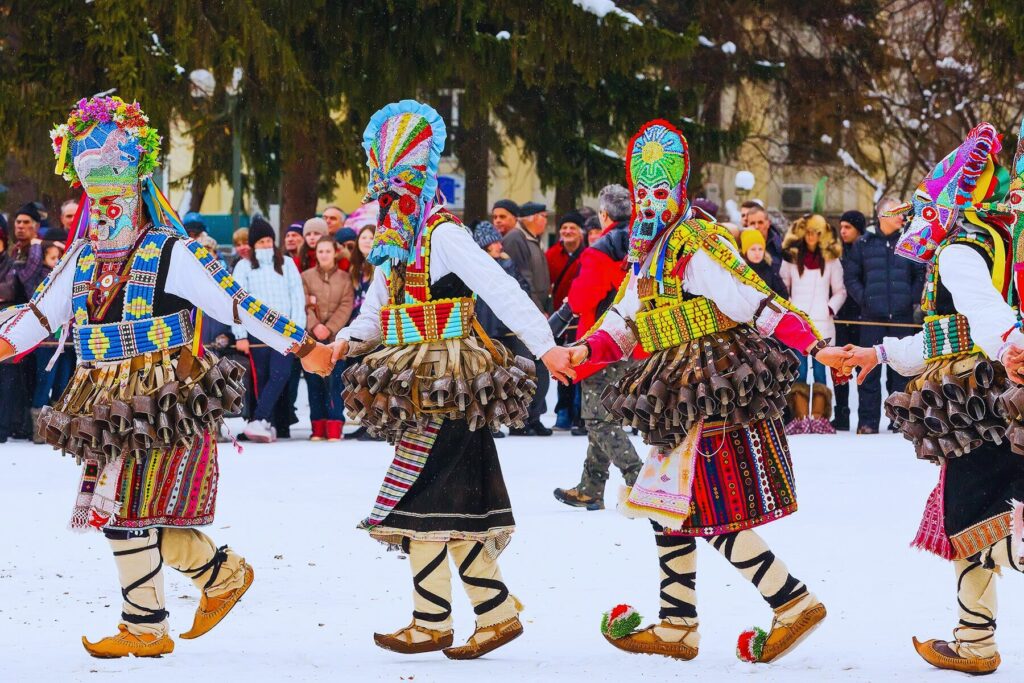
Festivals and Celebrations
Cultural diversity is celebrated worldwide through a myriad of festivals and celebrations. Here are some notable ones:
- Albuquerque International Balloon Fiesta (New Mexico, USA): A spectacular display of hot air balloons filling the sky.
- Naadam Festival (Mongolia): Known as the “Three Manly Games,” featuring traditional sports like horse racing, archery, and wrestling.
- Black-necked Crane Festival (Bhutan): Celebrated in the courtyard of Gangtey Goemba, showcasing Bhutanese culture.
- Diwali (India): The Festival of Lights, celebrated with lamps, fireworks, and family gatherings.
- Songkran Festival (Thailand): A water festival marking the Thai New Year with joyous water fights.
- Tết Nguyên Đán (Vietnam): Also known as the Feast of the First Day, celebrated during the Vietnamese New Year.
Winter Activities in Delhi
Delhi offers a variety of engaging winter activities. Here are some recommendations:
- Offbeat Trippers: Explore unique and offbeat destinations around Delhi for a winter adventure.
- Thrillophilia: Discover a diverse range of activities in Delhi, starting from ₹370.
- Winter Break in Delhi Schools (2024): Due to the cold weather, schools up to Grade 5 in Delhi have a winter break.
- Places to Visit in December: Explore various places in Delhi and nearby regions with activities suitable for December.
- Winter Festivals and Events: Delhi hosts a calendar full of winter festivals and events, offering art and cultural experiences.
- Cold and Foggy Days: Experience the unique atmosphere of cold and foggy days in Delhi during winter.
Managing the Transition to Spring
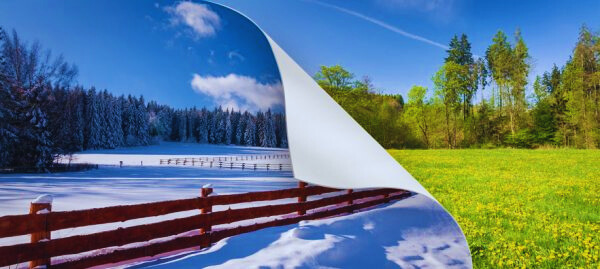
Preparing for Seasonal Changes
As seasons change, it’s essential to adapt and maintain well-being. Here are some tips to prepare for seasonal changes:
- Helping Your Body Adapt Quickly: Explore ways to assist your body in adjusting to season changes, such as adjusting your diet and sleep patterns.
- Mental Health Preparation: Focus on mental health by setting intentions, embracing the seasonal cycle, and letting go of things that no longer serve you.
- Staying Healthy: Maintain an active lifestyle throughout autumn and winter to reinforce overall health and boost the immune system.
- Physical Preparedness: Prepare for changing seasons with practical steps like swapping out car ‘go’ bags, cleaning gutters, and readying water tank heaters.
- Understanding Seasonal Changes: Be aware of how seasonal changes can affect mood and behavior, and take proactive steps to navigate these transitions smoothly.
- Mental Health during Seasonal Changes: Enhance mental health during seasonal transitions by spending time outside, trying light therapy, engaging in serotonin-boosting activities, and ensuring adequate sleep.
Wardrobe Adjustments
Making seasonal wardrobe adjustments is a thoughtful process that involves assessing and adapting your clothing to the changing weather. Here are tips for a seamless wardrobe transition:
- Evaluate Your Wardrobe: Start by thoroughly assessing your current wardrobe to identify what you have and what you might need for the upcoming season.
- Separate Daywear and Evening Wear: Organize your wardrobe by separating daywear from evening wear for convenience and functionality.
- Divide by Sleeves: Differentiate short-sleeved tops, shirts, and blouses from long-sleeved ones for easy access and planning.
- Pros and Cons of Seasonal Changes: Consider the pros and cons of changing your wardrobe with the seasons, weighing the benefits of a fresh wardrobe against the potential for clutter.
- Transitioning Your Closet: Assess which clothing items need attention before storage, such as de-pilling sweaters with a shaver or stone.
- Regular Wardrobe Check-ins: Treat seasonal wardrobe changes as an opportunity for regular check-ins with your clothing, preventing clutter and ensuring a well-curated collection.
Outdoor Activities in Transition Period
Engaging in outdoor activities during transitional periods, such as autumn or spring, can be delightful. Here are some enjoyable activities to consider:
- Go for a Walk or Hike in the Park: Take advantage of the crisp air and invigorating atmosphere to explore nature during the transitional season.
- Outdoor Movie Night Under the Stars: Set up a cozy outdoor space for a movie night and enjoy films under the stars.
- Plant a Flower for the Fairies: Get creative with gardening activities, like planting flowers or creating a fairy garden.
- Collect Leaves for a Collage: Take a walk in your neighborhood, collect different types of leaves, and create a vibrant leaf collage.
- Attend a Harvest Festival: Participate in local harvest festivals at farms, enjoying the festivities and seasonal vibes.
Public Expectations and Reactions

Social Media Buzz
Staying abreast of the latest trends and updates in social media is essential for effective digital marketing. As of January 2024, here are some notable aspects:
- Content Ideas and Seasonal Hashtags: Stay creative by exploring new content ideas and jumping on trending seasonal hashtags.
- Real-Time News Content: Platforms are expected to focus more on real-time news content through dedicated feeds and highlights, enhancing user engagement.
- Long-Form Content and Nostalgia Core: Anticipate the resurgence of long-form content and the rise of “nostalgia core” as notable social media trends in 2024.
- World of Winter 2024: Social media captures the signs and sounds of events like the World of Winter in Grand Rapids.
- AAJ 2024 Winter Convention: Engage with the legal community and stay updated on the AAJ 2024 Winter Convention through their social media toolkit.
- Arctic Blast Alerts: Beyond marketing, social media serves as a crucial platform for disseminating weather alerts, such as the Arctic blast bringing cold temperatures in January 2024.
Public Perception of Winter Duration
Public perception of winter duration is influenced by various factors, and studies reveal interesting insights:
- Cold Weather as Evidence: Research suggests that public perception of cold weather events, occurring in the winter months, can influence views on climate change.
- Age-Based Perceptions: Age plays a role in how individuals perceive winter. Younger individuals (18 to 44 years old) are more likely to have favorable views of winter compared to those aged 45 and older.
- Sense of “Normal” Weather: A study indicates that people’s sense of “normal” weather is often confined to the weather experiences of the last several years, impacting perceptions of the cold during winters.
- Unlikability of Winter: There is evidence to suggest that winter is often considered the most unlikable season, with public sentiment potentially changing once individuals are no longer dealing with its daily effects.
- Doubts About Climate Change: Public doubts about climate change may be exacerbated by cold weather events, which are sometimes seen as disconfirming evidence.
- Attribution to Climate Change: A Gallup poll indicates that a significant portion of the U.S. population attributes unusual winter temperatures to climate change, with perceptions evolving.
Memes and Jokes Related to Delhi Winters
Delhi’s harsh winter conditions have sparked a creative outlet on social media, particularly Twitter, where users have shared humorous memes and jokes to cope with the cold wave. The memes often highlight the challenges faced by Delhiites during the winter season, such as the intense cold, foggy weather, and the overall struggle to stay warm. Citizens have found humor in relatable situations, creating a meme fest that reflects the community’s ability to find joy even in challenging weather conditions.
Delhi Winter 2024: A Review
Noteworthy Events in Delhi – January 2024
Delhi is bustling with a variety of events in January 2024, offering diverse experiences for residents and visitors alike:
- Tripoto’s List of 14 Events: Tripoto has compiled a list of 14 must-attend events in Delhi for January 2024.
- Greaves India’s Unmissable Events: Greaves India provides a roundup of unmissable events in India for the year 2024, including festivals like Lohri.
- Hindustan Times – A Calendar Full of Events: Hindustan Times discusses a calendar full of events in Delhi ahead of the New Year, catering to art and culture enthusiasts.
- Economic Times – Lohri 2024: Learn about the history, significance, traditions, and all you need to know about Lohri 2024, a vibrant winter celebration rooted in Northern India’s folk traditions.
- Hindustan Times – Lohri 2024: Further insights into Lohri 2024, including its date, history, significance, and celebration of Punjab’s harvest festival.
- Yale School of Management – New Delhi Winter Social: The Yale School of Management hosts the New Delhi Winter Social, providing a platform for interactions at Crowne Plaza’s Mosaic.
Exceptional Weather Instances in Delhi
Delhi has witnessed exceptional weather instances recently, marking significant temperature fluctuations and challenging conditions:
- Times of India – Delhi’s Extreme Cold Spell: Delhi experienced its coldest day in two years recently, with temperatures plummeting and a notable chill in the air.
- Times of India – Minimum City: Fog in Freeze Frame: The city faced dense fog conditions, impacting visibility, and the India Meteorological Department (IMD) predicted extreme cold days.
- Economic Times – Dense Fog Affects Services: Dense fog affected flight and train services in Delhi and the National Capital Region, leading to reduced visibility and travel disruptions.
- Hindustan Times – Big Weather Conditions: Unusual weather conditions, including rain, significantly improved Delhi’s air quality, providing relief from severe pollution.
- LiveMint – Advanced Weather Forecast Systems: The central government plans to introduce advanced weather forecast systems in response to shifting weather patterns and increased instances of extreme rainfall.
- Weather.com – Delhi Welcomes 2024 with Mild Weather: Delhi welcomed 2024 with mild weather and shallow fog, with the minimum temperature standing above the seasonal average.
Unique Challenges Faced during Delhi Winters
Delhi faces unique challenges during winters, including:
- BBC – North India shivers under the grip of cold wave: A severe cold wave affecting North India has led to disruptions in transportation, and school closures, and posed a threat to vulnerable populations, including the homeless.
- BBC – Delhi winter: Cold wave and fog cause chaos: The winter season brings about a severe cold wave and dense fog, causing chaos with disrupted flights, trains, and temporary closures of educational institutions.
- NDTV – Poor Air Quality in Winter: Delhi struggles with poor air quality during winter due to factors like local pollution sources and crop burning in nearby regions, exacerbating health issues for residents.
- Quora – Coping with Harsh Winters: Individuals new to Delhi, especially from warmer regions, face the challenge of adapting to the harsh winter climate, requiring adjustments in clothing and lifestyle.
- Al Jazeera – Struggle of Homeless in Winter: Homeless populations in Delhi face immense challenges finding shelter and staying warm during the biting cold winter nights, posing significant humanitarian concerns.
- Hindustan Times – Persistent Winter Cough: The onset of winter in Delhi brings the persistent issue of ambient air pollution, contributing to respiratory problems and a spike in winter cough cases.
Anticipating the End of Winter
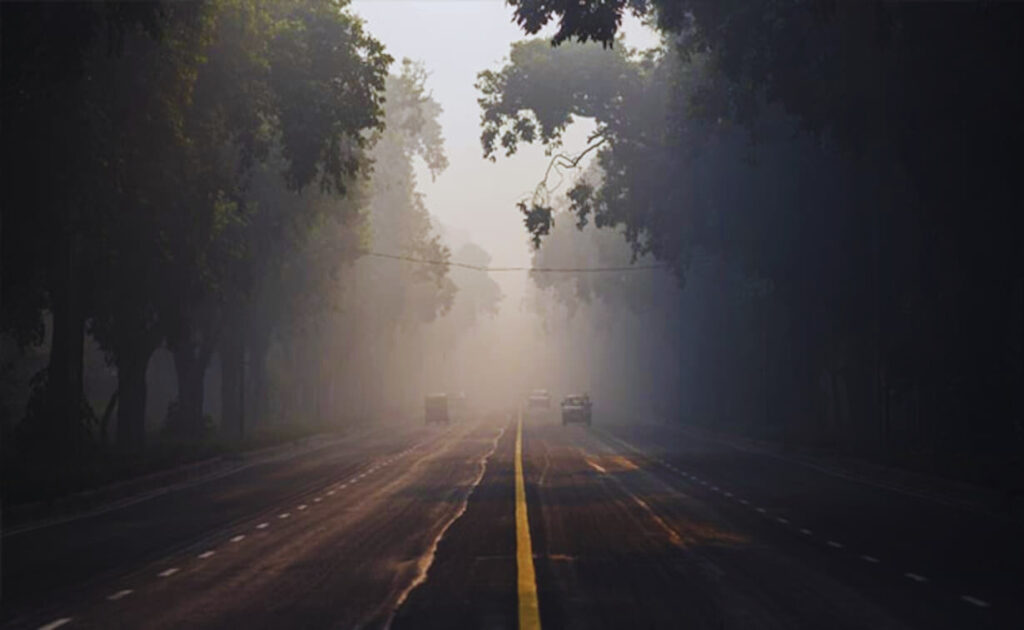
Monitoring Delhi Weather Updates
Monitoring Delhi’s weather is crucial, especially during winter. Key updates for January 12, 2024, include:
- India Today – Delhi Weather Today: The minimum temperature in Delhi was recorded at around 3.22 degrees Celsius.
- ABP News – Dense Fog Covers Capital: Dense fog covered the capital, affecting visibility and causing disruptions.
- India TV News – Delhi Records Coldest Morning: Delhi experienced its coldest morning of the winter season, with temperatures hovering around 3.8 degrees Celsius.
- MSN – Big Headlines: Dense fog persisted, leading to updates on weather conditions in the Delhi-NCR region.
- Hindustan Times – Lowest Temperature of 2024: Delhi recorded its lowest temperature of the 2024 winter season at 3.9 degrees Celsius.
- Indian Express – Cold and Foggy Morning: The national capital woke up to a cold and foggy morning, with visibility recorded at 0 meters.
Historical Weather Data Comparison for New Delhi
To compare historical weather data for New Delhi, we can consider average temperatures for January from various sources:
- Wunderground: Provides historical temperature data with daily max, average, and min values. For example, on January 10th, the max temperature was 62°F, the average was 53.7°F, and the min was 49°F.
- WeatherSpark: Gives average daily high temperatures for January, ranging from 67°F to 70°F, with about 19% overcast or mostly cloudy days.
- Time and Date: Offers average temperature data for specific dates, with reported values for Dec 28 to Jan 12, indicating an average of 54°F.
- World Weather Online: Shows historical weather on January 10th over the years, with details on weather, max and min temperatures, wind, rain, humidity, cloud cover, and pressure.
- Wanderlog: Provides the average temperature in New Delhi in January for a typical day, ranging from a high of 72°F to a low of 42°F.
Insights from Weather Sayings
Weather sayings and proverbs have long been used to predict local weather patterns. Here are some notable examples:
- Almanac – Weather Proverbs and Prognostics: “Unusual clearness in the atmosphere, with distant objects seen distinctly, indicates rain.” “Red sky at night, sailor’s delight; red sky in morning, sailors take warning.”
- Homemade Dessert Recipes – Weather Folklore Sayings: “Red sky at night, sailor’s delight; red sky in the morning, sailors take warning.”
- Wisconsin Weather Stories – Weather Sayings Lesson: “When your joints hurt, a storm is coming.” “Low air pressure, which brings in storms, is referenced in sayings.”
- Art of Manliness – 22 Old Weather Proverbs That Are True: “If the goose honks high, fair weather.” “When pipes smell stronger, it’s going to rain.”
- Wisconsin Weather Stories – Weather Sayings: Wind from the West: “Wind from the East, fish bite the least.” “Wind from the North, do not go forth.”
- Southern Living – 40 Things Southerners Say When It’s Hot: Southern sayings related to extreme heat and humidity.
Tips for Surviving the Last Leg of Winter
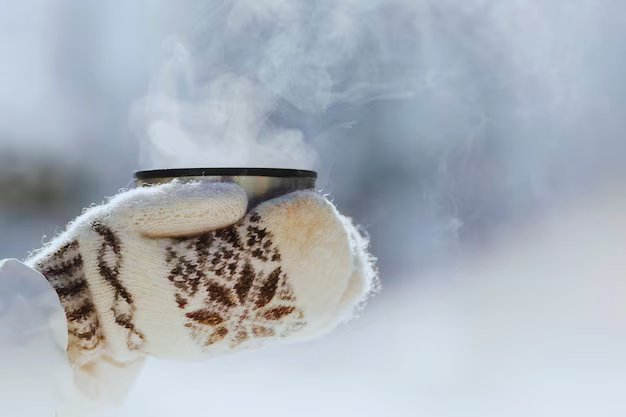
Health and Wellness Strategies for Winter
To maintain health and wellness during winter, consider the following strategies:
- Limit the Spread of Germs: Practice good hygiene, including frequent handwashing, to prevent the spread of germs.
- Stay Hydrated: Keep yourself well-hydrated by drinking adequate water throughout the day.
- Vitamin D Intake: Increase your vitamin D intake, which is essential during the winter months when exposure to sunlight may be limited.
- Maintain Dry Skin: Manage dry skin using moisturizers and proper skincare routines.
- Cold-Weather Activities: Engage in cold-weather activities like ice skating or skiing to stay active and mix up your workout routine.
- Stress Management: Conquer stress during the holiday season by incorporating stress-relief practices into your routine.
- Indoor Air Quality: Ensure good indoor air quality for overall well-being, especially in closed environments during winter.
- Flu Shot: Get your flu shot to protect against seasonal influenza and its potential complications.
- Stay Active: Regular physical activity is crucial for maintaining overall health; find indoor exercises or activities that suit your preferences.
- Flexibility in Sick Leave Policies: Encourage flexibility in sick leave policies to allow employees to stay home when unwell, minimizing the spread of contagious diseases.
Staying Active in Cooler Temperatures
Exercising in cooler temperatures offers unique benefits and challenges. Here are key tips for staying active in the cold:
- Gradual Warm-up: Begin your exercise routine with a gradual warm-up to prepare muscles for activity and reduce injury risk.
- Layered Clothing: Dress in layers to retain warmth and adjust clothing as your body temperature rises during exercise.
- Appropriate Clothing: Choose moisture-wicking fabrics to keep sweat away from the body and prevent chilling.
- Stay Hydrated: Maintain hydration levels, as staying well-hydrated is essential for overall health and exercise performance.
- Flexible Activities: Engage in flexible activities like indoor workouts, cold-weather sports, or winter hiking to stay active during colder months.
- Mindful Cooling Down: Include a proper cool-down to gradually reduce heart rate and prevent muscle stiffness after exercise.
- Regular Physical Activity: Maintain a consistent exercise routine to combat the potential effects of colder weather on activity levels and overall well-being.
Dietary Adjustments for Winter Conclusion
As winter sets in, it’s crucial to make dietary adjustments to support your health and well-being. Consider the following key points:
- Caloric Requirements: Studies suggest that individuals living in cold environments may have increased caloric requirements, emphasizing the importance of maintaining adequate nutrition during winter.
- Balanced Diet: Maintaining a balanced diet is essential year-round but becomes particularly important in winter. A nutritious and balanced diet supports overall health and helps ward off seasonal illnesses.
- Nutritional Supplementation: During winter, nutritional supplementation is not just an option but a necessity. It can contribute to optimal health and immune system protection, addressing the challenges posed by the season.
- Weight Management: Be mindful of weight management by choosing a winter diet plan that supports your health goals. A well-curated diet can be instrumental in weight loss during the colder months.
- Seasonal Cues: Recognize seasonal cues to food scarcity and calorie cravings. Understanding these cues can help you make informed dietary choices during the winter.
The Ecological Aspect
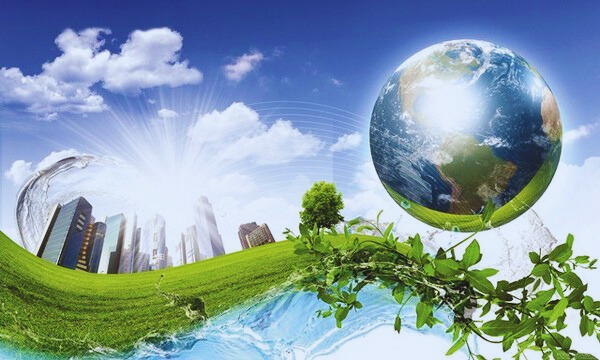
Impact on Flora and Fauna
Climate change has significant impacts on both flora and fauna, disrupting ecosystems and threatening biodiversity. Key effects include:
- Habitat Loss: Rising temperatures alter vegetation patterns, impacting food sources, water access, and shelter. This poses a severe threat to various species, leading to habitat loss and fragmentation.
- Survival Rates: Climatic changes, including rising temperatures, affect the survival rates of many species. This can be attributed to altered environmental conditions, availability of resources, and increased stress on wildlife.
- Adaptation Challenges: Wildlife faces challenges in adapting to rapidly changing climates. For example, drier summers result in less available grass for forage, impacting herbivores, while thinner snowpack exposes animals to colder conditions.
- Species Extinction Risk: Climate change increases the risk of extinction for various flora and fauna species due to the disruption of ecosystems and their natural processes.
Wildlife Adaptations
Wildlife employs various strategies to survive winter conditions:
- Insulation and Camouflage: Animals like Arctic foxes grow thicker, white coats for insulation and camouflage in snowy environments, aiding both warmth and concealment.
- Seasonal Adaptations: Animals exhibit remarkable abilities to adapt seasonally. This includes changes in behavior, physiology, and morphology to cope with colder temperatures and scarce resources.
- Hibernation: True hibernators, such as chipmunks and ground squirrels, enter a state of reduced metabolism, allowing them to survive with lowered body temperatures and slowed physiological functions.
- Specialized Anatomy: Animals like reindeer have large and sharp hooves for weight distribution and proper grip on snow and ice, facilitating movement in winter weather.
- Thermoregulation: Some mammals adjust fur density, while birds fluff their feathers to trap air, creating insulation layers that conserve body heat.
Ecosystem Changes during Winter
Winter has significant impacts on ecosystems, influencing various ecological processes and components:
- Vegetation Damage: Extreme winter warming events can cause damage to Arctic vegetation at landscape scales, affecting the structure and composition of plant communities.
- Seasonal Adaptations: Winter ecological processes play a crucial role in affecting the reproduction, growth, survival, and overall fitness of organisms. These processes are distinct from those occurring in other seasons.
- Climate Change Impacts: Changes in winter temperatures, precipitation patterns, and other factors have widespread effects on ecosystems. Shifts in habitats influence the distribution and behavior of organisms within ecosystems.
- Soil Respiration: Winter warming can lead to increased soil respiration, impacting soil health and nutrient cycling. Changes in soil conditions influence plant growth and microbial activity.
- Terrain Changes: Winter weather patterns contribute to terrain changes, including erosion, soil loosening, and frost effects. These alterations affect the overall landscape and can have downstream effects on ecosystems.
- Increased Soil Frost: Cold-temperate ecosystems may experience increased soil frost due to reduced snow cover, affecting soil insulation and potentially influencing plant and microbial communities.
Popular Misconceptions About Winter

Debunking Weather Myths
Weather myths persist, often fueled by misconceptions. Let’s debunk some common ones:
- Rivers, Hills, and Mountains Block Tornadoes: Contrary to belief, geographical features don’t prevent tornadoes. Tornadoes can occur anywhere when atmospheric conditions favor them.
- Lightning Never Strikes the Same Place Twice: This myth is false. Lightning can strike the same location repeatedly, especially tall structures. The notion that it doesn’t is a misconception.
- Windy City Myth: Chicago isn’t called the “Windy City” due to its windiness. The term originated in the late 19th century as a metaphor for political hot air, not weather-related windiness.
- Seconds Between Lightning and Thunder: The belief that the number of seconds between a lightning strike and the sound of thunder equals distance in miles is inaccurate. Divide the seconds by 5 to estimate the distance in miles.
- Lightning Prediction with Hair: Hair standing on end doesn’t reliably predict lightning. Lightning can strike without this phenomenon occurring, making it an unreliable indicator.
- Lightning Safety Indoors: Being indoors doesn’t guarantee safety from lightning. Stay away from windows, plumbing, and electrical appliances during storms to reduce the risk of injury.
Common Misunderstandings About Seasons
Misconceptions about seasons often arise due to misunderstandings. Some common ones include:
- Temperature Determines Seasons: Contrary to popular belief, seasons are not solely determined by temperature. The Earth’s axial tilt and its orbit around the sun play crucial roles.
- Cold Means, It’s Winter: Associating cold weather with winter is a misconception. Seasons are more about the Earth’s position relative to the sun than just temperature. For example, it can be winter in one hemisphere while summer in the other.
- Equal Sunlight in All Seasons: Some believe each part of the Earth receives the same amount of sunlight throughout the year. In reality, the axial tilt causes variations, leading to seasons.
- Seasons are caused by Earth’s Distance from the Sun: The misconception that seasons result from varying distances between the Earth and the Sun is incorrect. It’s the axial tilt that causes seasonal changes.
Scientific Clarifications
Winter conditions significantly impact ecosystems, presenting ecological challenges and shaping interactions. Scientific research delves into various aspects of winter biology:
- Winter Constraints on Ecosystems: Winter poses dramatic constraints on temperate, boreal, and polar ecosystems, influencing both abiotic and biotic interactions.
- Winter Warming’s Ecological Relevance: Winter warming has profound ecological effects, often more relevant than summer warming. However, these effects are not frequently compared, and causal explanations remain a subject of study.
- Cold Acclimation in Evergreen Conifers: Evergreen conifers demonstrate remarkable cold acclimation abilities, making them champions of winter survival. Their molecular adaptations play a key role in developing cold hardiness.
- Seasonal Variation in Food Webs: The co-occurrence of species with divergent responses to winter introduces seasonal variation in interaction strengths within food webs, affecting ecosystems from summer to winter.
- Climate Change Effects on Biodiversity: Climate change has altered the duration, magnitude, and frequency of extreme events, impacting biodiversity, and ecosystems, and introducing challenges such as droughts, forest fires, and heatwaves.
- Curriculum on Living with Winter: There are educational initiatives, like an integrated curriculum for middle school, that introduce scientific explanations about winter ecology, including concepts like the ecological food web for winter-active subnivean animals.
Public Sentiment Towards Winter End
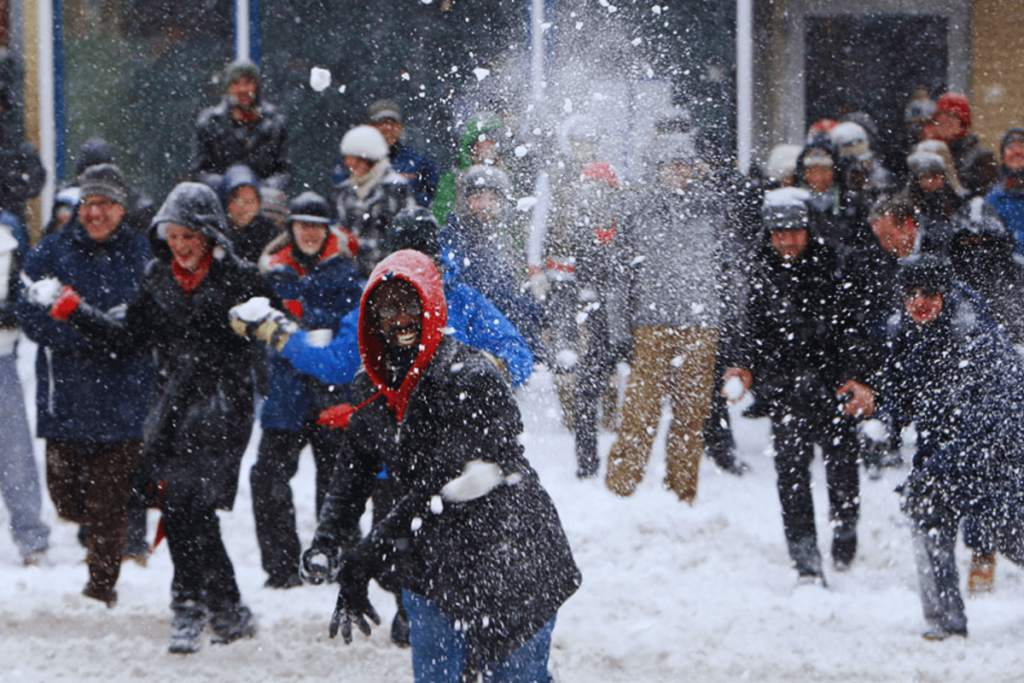
People’s Expectations of Weather
People’s expectations of weather are influenced by a combination of external climatic conditions and personal experiences. Studies show that subjective perceptions of seasonal temperatures are shaped not only by the actual weather but also by individual experiences and prior beliefs. Personal experiences of extreme weather events or local weather conditions play a significant role in shaping perceptions of climate change. Additionally, seasonal changes impact people’s perceptions of public spaces and urban environments.
Understanding public perceptions of climate change risk is crucial, as it influences individual and collective actions related to climate change mitigation and adaptation.
Winter Delights in Delhi
Winter in Delhi offers a variety of experiences to explore the city’s charm. From cultural landmarks to outdoor activities, there’s something for everyone:
- Visit Temples and Monuments: Explore Lotus Temple, ISKCON Temple, Jama Masjid, Akshardham Temple, Hauz Khass, and India Gate for cultural and historical richness.
- Enjoy Gardens and Parks: Lodi Gardens is perfect for a leisurely walk. Embrace nature at its best amidst historical structures.
- Winter Markets: Visit local markets like Sarojini Nagar and Janpath for winter fashion and street shopping.
- Delicious Street Food: Warm up with Delhi’s street food, from spicy chaat to piping hot paranthas.
- Cultural Events: Delhi hosts various cultural events during winter. Check out local listings for festivals, music, and art events.
- Family Outings: Spend quality time with family at places like Qutub Minar or choose from the city’s numerous family-friendly destinations.
Conclusion
Wrapping up the Winter Chronicles in Delhi is akin to bidding farewell to an old friend. The exact date of winter’s end may elude us, but the transition from chilly winds to the warmth of spring is a journey Delhiites embrace with enthusiasm. As we await the subtle signs of nature’s shift and anticipate the blossoming flowers, one thing is certain – the spirit of Delhi’s winters, with all its perplexity and burstiness, will remain etched in our memories until the next frosty embrace.
Read also: What is Your Perception of IKS?
FAQs About Delhi Winter 2024
Q: Can meteorologists accurately predict when winter will end in Delhi?
While meteorologists use advanced tools, the dynamic nature of weather makes pinpoint predictions challenging.
Q: Are there any traditional sayings in Delhi that hint at the end of winter?
Yes, locals often rely on traditional weather sayings that have been passed down through generations.
Q: How do Delhiites typically celebrate the arrival of spring?
Festivals, outdoor activities, and a general sense of relief mark the arrival of spring in Delhi.
Q: What are the common misconceptions about winter in Delhi?
Misconceptions range from beliefs about cold weather causing illnesses to myths about specific foods being more effective during winter.
Q: How do wildlife and plants in Delhi adapt to the changing climate during winter?
Birds migrate, animals change their behavior, and plants adjust their growth patterns as part of their natural adaptation to winter in Delhi.
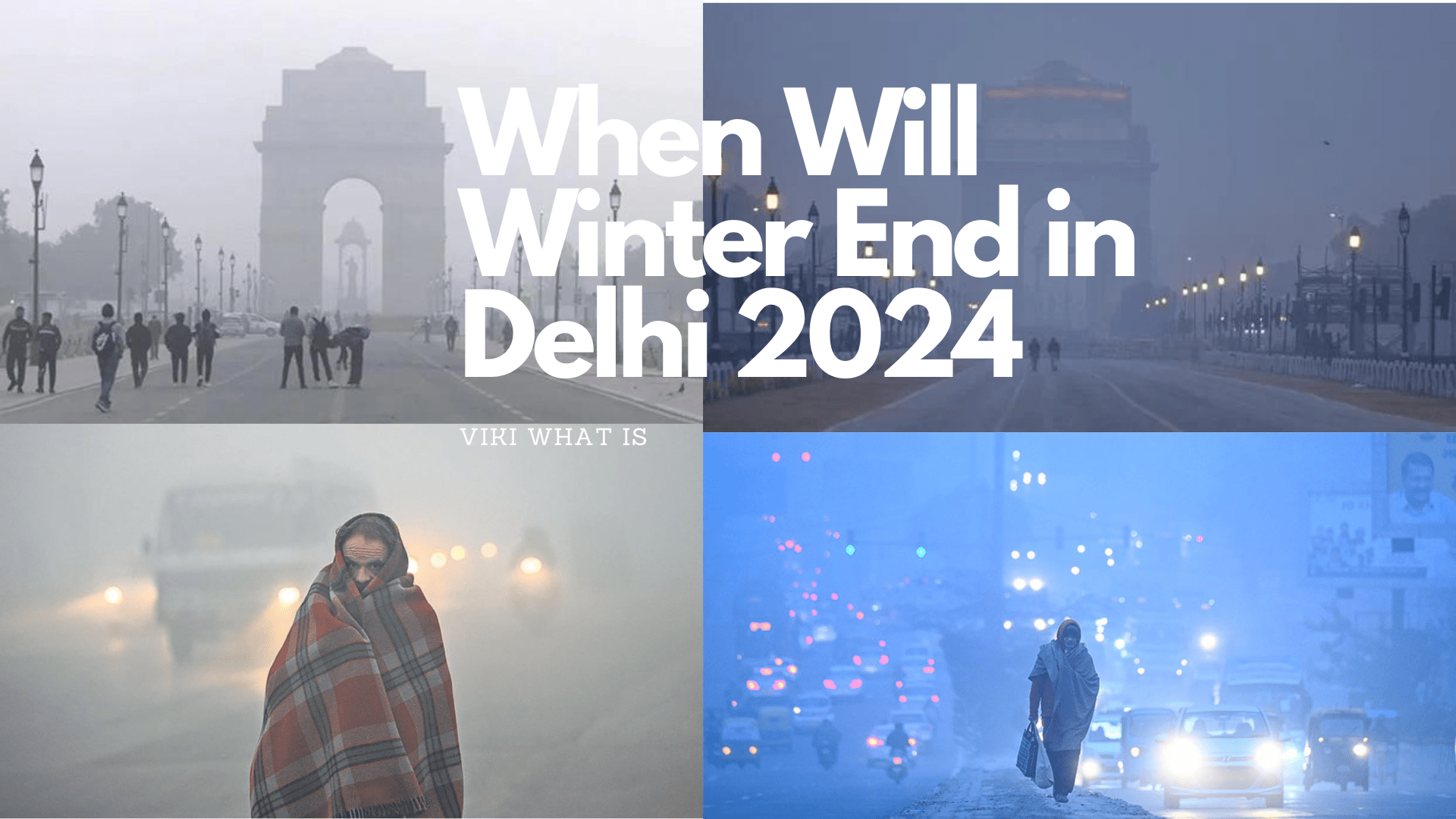
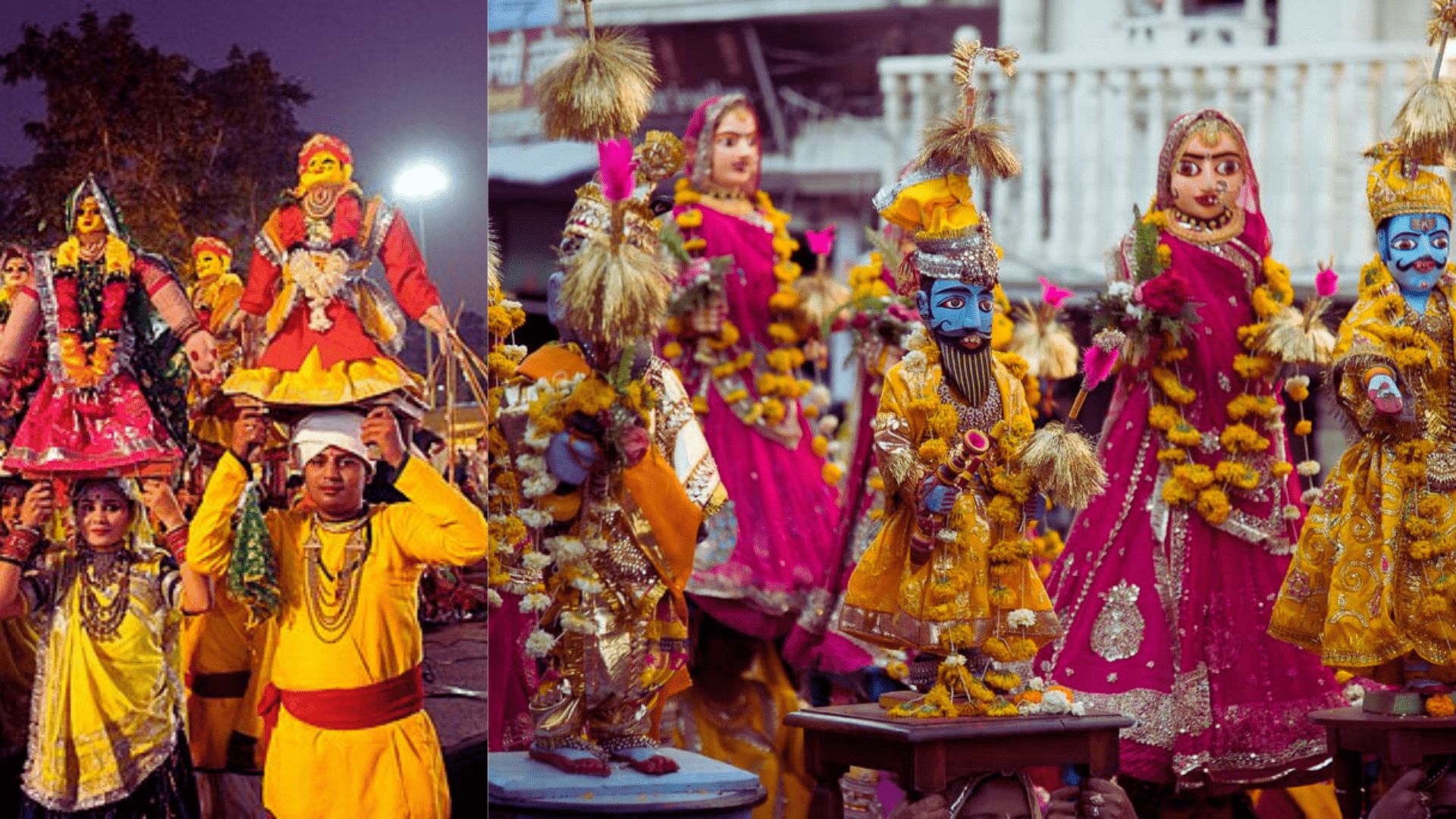
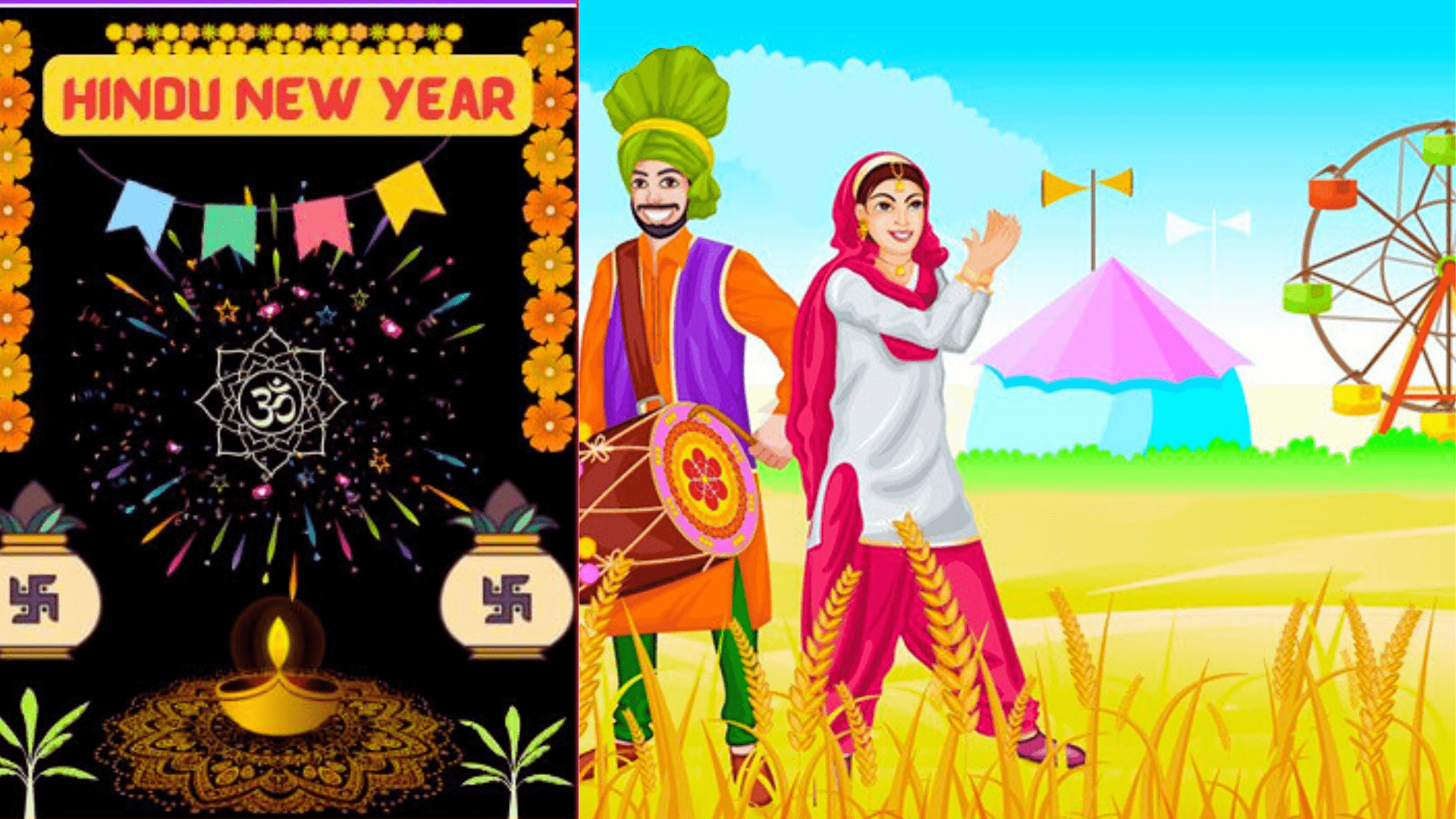


I always learn something new from your posts. This one was particularly enlightening.
Thank you for your complement
Wow Thanks for this write-up i find it hard to come up with decent tips out there when it comes to this material appreciate for the guide website
thanks
Wow Thanks for this page i find it hard to find good ideas out there when it comes to this subject material appreciate for the information site